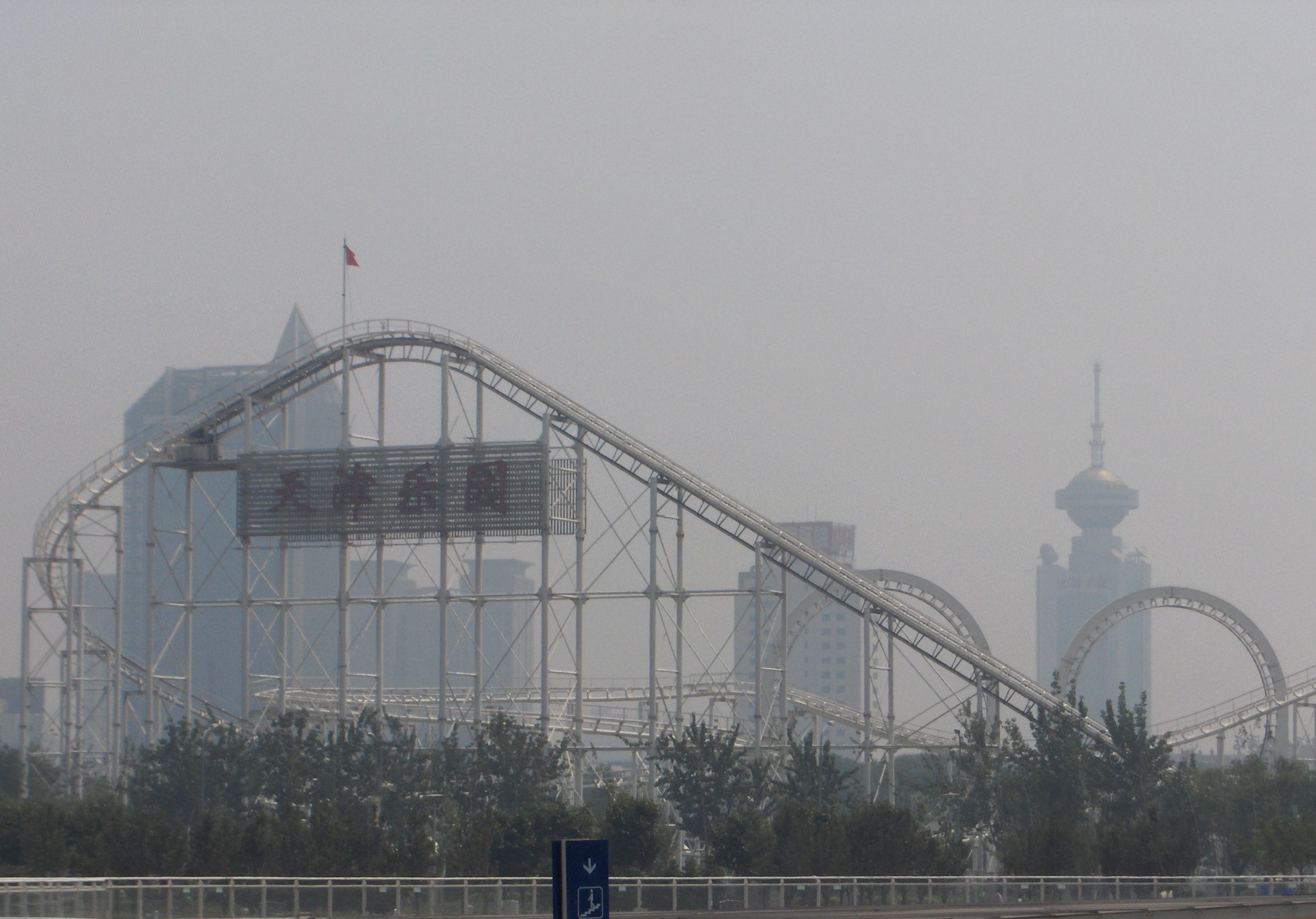
March 9, 2014, by Tony Hong
The Desolation of Smog
By Dr. David O’Brien,
Assistant Professor, School of Contemporary Chinese Studies at the University of Nottingham Ningbo China.
Recently a Chinese general provoked online scorn when he claimed that Beijing’s foul air was the best defence against US laser-guided weapons.
People’s Liberation Army Major-General Zhang Zhaozhong told state-television that “Laser weapons are most afraid of smog”. 
“Under conditions where there is no smog, a laser weapon can fire [at a range of] 10km” he said, adding, “When there’s smog, it’s only 1km” (BBC Monitoring February 24, 2014).
It’s yet another advantage to add to a bizarre list compiled in December by China Central Television Editor Wang Lei who wrote on the CCTV website that China’s terrible air has “surprising benefits”.
According to Wang:
1. It unifies the Chinese people.
2. It makes China more equal.
3. It raises citizen awareness of the cost of China’s economic development.
4. It makes people funnier.
5. It makes people more knowledgeable (of things like meteorology and the English word haze) (Time Magazine December 9 2013).
In China today – somewhat dystopically – facemasks have become fashionable with cheery monkeys or dainty lace borders decorating some of the extraordinary range on sale in one campus shop.
Hugely expensive international schools are now advertising hermetically-sealed outdoor play areas and air purifiers in each classroom to attract worried ex-pat parents.
One international school in Beijing’s north-eastern Shunyi District recently spent an eye-watering US$5 million on a huge tent designed to filter out air particles which houses tennis courts and other recreation areas (China.org.cn March 3, 2014).
This week Chinese scientists warned that pollution is now so bad that it is slowing photosynthesis in plants with potentially devastating impacts on food supply.
He Dongxian, an associate professor at China Agricultural University’s College of Water Resources and Civil Engineering, said new research suggested that if the smog persists, Chinese agriculture will suffer conditions “somewhat similar to a nuclear winter” (China Daily March 4 2014).
On February 21st – just before the annual ‘Two Meetings’ “liang hui” assemblies of the National People’s Congress (NPC) and the Chinese People’s Political Consultative Conference (CPPCC) – Beijing authorities issued its first “orange” smog alert since it introduced a new four-tier warning system last October, with orange as its second-highest level. The warning meant schools were supposed to suspend outdoor activities.
Chinese leaders are very much aware that pollution is one of the greatest and most urgent challenges they face.
Indeed fighting pollution along with the need for economic reform were the key themes of Premier Li Keqiang’s speech this week to the National People’s Congress, one of the centrepieces of the ‘Two Meetings’.
In surprisingly forthright language Li said the government would “declare war” on pollution in the same way China had fought poverty. Smog, he said, was “nature’s red-light warning against the model of inefficient and blind development” and vowed to fight pollution “with the same determination with which we battled poverty”. (China Daily March 7 2013).
Though it may not seem so at times, China has in fact made significant progress in the fight against pollution. Researchers at Harvard University last year said China’s cuts in sulphur-dioxide emissions in recent years may have been “one of the most swiftly effective air-pollution policies ever implemented anywhere” (Economist March 8 2014).
But there is a long long way to go. At the time of writing, fine particle pollution (PM 2.5) readings in Beijing are 246. Anything above 100 is considered unhealthy. In Shijiazhuang, capital of neighbouring Hebei it was a gasping 441.
To put this into perspective, in London the reading was 42, in New York 36.
No comments yet, fill out a comment to be the first

Leave a Reply